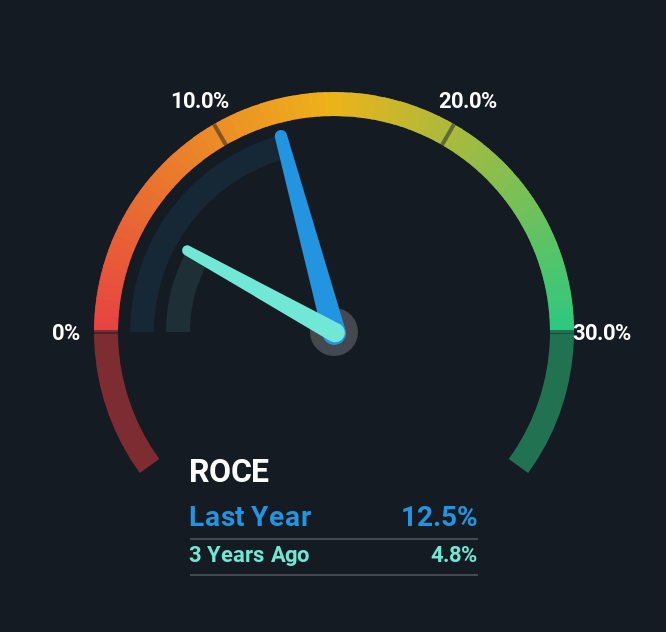- South Africa
- /
- Professional Services
- /
- JSE:PMV
Capital Allocation Trends At Primeserv Group (JSE:PMV) Aren't Ideal
If we want to find a stock that could multiply over the long term, what are the underlying trends we should look for? Typically, we'll want to notice a trend of growing return on capital employed (ROCE) and alongside that, an expanding base of capital employed. Put simply, these types of businesses are compounding machines, meaning they are continually reinvesting their earnings at ever-higher rates of return. Having said that, from a first glance at Primeserv Group (JSE:PMV) we aren't jumping out of our chairs at how returns are trending, but let's have a deeper look.
Return On Capital Employed (ROCE): What Is It?
For those that aren't sure what ROCE is, it measures the amount of pre-tax profits a company can generate from the capital employed in its business. To calculate this metric for Primeserv Group, this is the formula:
Return on Capital Employed = Earnings Before Interest and Tax (EBIT) ÷ (Total Assets - Current Liabilities)
0.12 = R25m ÷ (R293m - R92m) (Based on the trailing twelve months to September 2024).
So, Primeserv Group has an ROCE of 12%. In absolute terms, that's a pretty normal return, and it's somewhat close to the Professional Services industry average of 14%.
Check out our latest analysis for Primeserv Group

Historical performance is a great place to start when researching a stock so above you can see the gauge for Primeserv Group's ROCE against it's prior returns. If you'd like to look at how Primeserv Group has performed in the past in other metrics, you can view this free graph of Primeserv Group's past earnings, revenue and cash flow.
What Does the ROCE Trend For Primeserv Group Tell Us?
When we looked at the ROCE trend at Primeserv Group, we didn't gain much confidence. Over the last five years, returns on capital have decreased to 12% from 17% five years ago. However, given capital employed and revenue have both increased it appears that the business is currently pursuing growth, at the consequence of short term returns. And if the increased capital generates additional returns, the business, and thus shareholders, will benefit in the long run.
What We Can Learn From Primeserv Group's ROCE
In summary, despite lower returns in the short term, we're encouraged to see that Primeserv Group is reinvesting for growth and has higher sales as a result. And long term investors must be optimistic going forward because the stock has returned a huge 426% to shareholders in the last five years. So while investors seem to be recognizing these promising trends, we would look further into this stock to make sure the other metrics justify the positive view.
If you'd like to know about the risks facing Primeserv Group, we've discovered 3 warning signs that you should be aware of.
If you want to search for solid companies with great earnings, check out this free list of companies with good balance sheets and impressive returns on equity.
New: Manage All Your Stock Portfolios in One Place
We've created the ultimate portfolio companion for stock investors, and it's free.
• Connect an unlimited number of Portfolios and see your total in one currency
• Be alerted to new Warning Signs or Risks via email or mobile
• Track the Fair Value of your stocks
Have feedback on this article? Concerned about the content? Get in touch with us directly. Alternatively, email editorial-team (at) simplywallst.com.
This article by Simply Wall St is general in nature. We provide commentary based on historical data and analyst forecasts only using an unbiased methodology and our articles are not intended to be financial advice. It does not constitute a recommendation to buy or sell any stock, and does not take account of your objectives, or your financial situation. We aim to bring you long-term focused analysis driven by fundamental data. Note that our analysis may not factor in the latest price-sensitive company announcements or qualitative material. Simply Wall St has no position in any stocks mentioned.
About JSE:PMV
Primeserv Group
An investment holding company, provides integrated business support services in South Africa.
Flawless balance sheet with solid track record and pays a dividend.
Market Insights
Community Narratives




